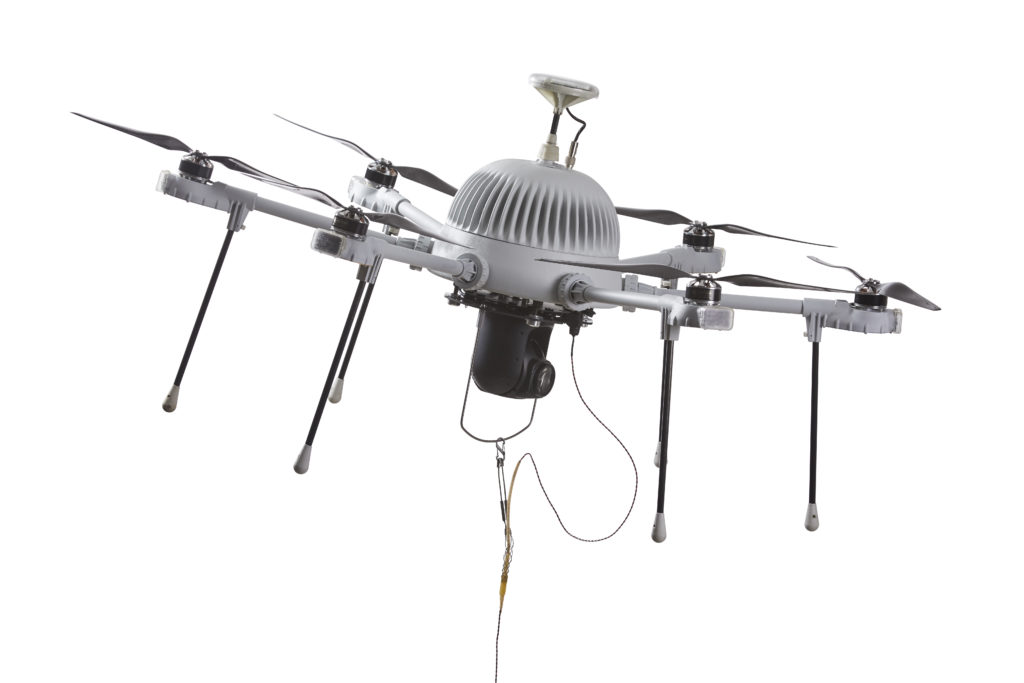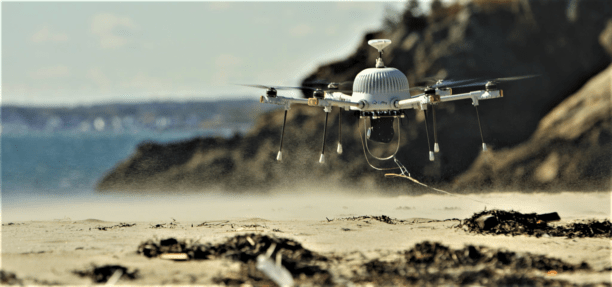
PARC is a unique solution for a wide variety of business and security needs. It’s a tethered drone, providing secure communications and a flight endurance of days. PARC is highly portable: using a generator on the ground, the system can be launched from anywhere. The tether means that operators can focus on the data and the mission, rather than flying. And it’s rugged – the kind of rugged that meets U.S. military requirements and can function in the high winds just after a hurricane.
PARC is already well known as a protective tool at major events like the Boston Marathon and July 4th celebrations. But through a variety of partnerships with government, communications partners, and the Red Cross, CyPhy Works is also putting PARC to use to serve communities after major weather events.
Laura Major, CyPhy Works CTO, explains how the PARC has been used in disaster response. “One of our primary functions is in performing assessments,” says Major. “After a hurricane, distributing support and funds quickly requires a detailed assessment. Previously that really meant going door to door.” Door to door assessment means putting more people in dangerous areas; and it’s a slow and difficult process. Using a drone with equipped with high powered imaging equipment, that assessment can be performed more quickly – and more safely. “PARC can be set up in a matter of minutes…. and with PARC, we’re able to get eyes above the area without putting people in harms way,” Major says.
The PARC platform also means that the important information gets to the right people – fast. “Video can be wide-streamed into their own network, if it’s streamed directly into an operations center,” explains Major. “The right people who need to see that data can get it in front of them immediately – and ultimately it comes in in a more subjective way.”
That data delivery makes disaster management more efficient – and more effective. “Speed is critical,” says Major. “With more immediate data, response teams can do better planning: they have more situational awareness about the overall condition of the infrastructure and environment.”
In addition to offering more data on the ground situation, PARC can also be used to provide additional cell service in areas where communications infrastructure may be interrupted. This is a major advantage for response teams and victims who need to communicate. This capability is the result of recent development: “One of the key changes to the product over the last year has been to allow for different communications missions,” says Major. “Radio payloads, cell services payloads, or we can now carry combinations of payloads like a camera and cell service – these are critical changes to the platform.”
PARC’s ability to fly in all weather conditions – rain, wind, and snow – keeps it in the air even when manned aircraft have been grounded. The payload agnostic platform, able to carry any payload from cameras to communications system – means that the tool will continue to evolve as it is deployed during and after disasters, says Major.
“First Responders have the flexibility to use PARC for purposes we may not even have thought of yet,” she says.
Miriam McNabb is the Editor-in-Chief of DRONELIFE and CEO of JobForDrones, a professional drone services marketplace, and a fascinated observer of the emerging drone industry and the regulatory environment for drones. Miriam has penned over 3,000 articles focused on the commercial drone space and is an international speaker and recognized figure in the industry. Miriam has a degree from the University of Chicago and over 20 years of experience in high tech sales and marketing for new technologies.
For drone industry consulting or writing, Email Miriam.
TWITTER:@spaldingbarker
Subscribe to DroneLife here.
